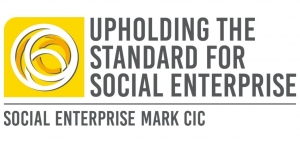Measuring Social Impact – The Difference of Social Enterprise
Part 2
By Richard Cobbett, Assessment and Compliance Manager
Last month, I started to consider how social enterprises should be distinguishing themselves when compared to other business models looking to validate ethical business credentials, through how they measure and report on their social impact (including environmental). To recap, there are three broad ways through which a business may report on its social impact:
- its social inputs (the activities and resources invested in, the services provided, which should at least imply social purposes);
- its social outputs (the extent of said activities and investment e.g. numbers of services provided, numbers of people helped, the level of social investment beyond operational cost requirements);
- its social outcomes (the positive results arising from activities e.g. measures showing how people have benefitted, and the perceived value of the services provided – financial and qualitative).
The commitment to maximise social outputs using income and profits – at least in equal measure to the proportion of profit that may eventually be paid to shareholders and owners – is what ultimately distinguishes social enterprise from other ethical business models. I therefore posed that, in differentiating their outputs, social enterprises should be considering how the level of the investment towards purely social interests, compares with the annual profits it generates year on year. Ideally speaking, this form of analysis should form part of the social impact reporting of any social enterprise.
In calculating social impact, there is a distinct element that some social enterprises are keen to capture when considering the above: how can they calculate the cost of the social value they have created – the effective financial value of the benefits conferred to their social stakeholders (as opposed to shareholders)?
Social Return on Investment (SROI) and other forms of social auditing provide solutions for this but can be quite demanding and resource intensive, particularly for organisations with restricted resources. Is this methodology the only valid approach though?
We are beginning to see other methods of conveying social value being employed by Social Enterprise Mark holders, within the social impact statements they provide on initial application, and at each annual renewal of their Mark status. The types of example that are emerging are:
- Mark Holders with contracts to provide a set number of social outputs/outcomes, who are paid up to a maximum but who choose to deliver more for their stakeholders;
- Mark Holders with service level agreements or being paid for a defined level of service, who enhance the outputs and the experience of stakeholders in ways that are not required or expected;
- Investing in free or volunteer services that otherwise represent chargeable income streams;
- Investing in employee posts (temporary or otherwise) that do not support income generation services;
- Making donations to external good causes (e.g. Charities, community groups) or investing in other community resources.
The above examples are by no means necessarily restricted to social enterprise – after all, pro-bono services and donations to good causes are common amongst all types of business. However, calculating the value of such activities and investments, then comparing it to profit distributed to owners or shareholders, can ultimately help distinguish the added value of social enterprise.
Clearly, this does not likely represent the whole financial value that a social enterprise may have created, which may be less tangible and reveal itself in various indirect and long-reaching ways. It therefore does not provide a detailed analysis of the return on investment; but it does offer a more straightforward way of at least beginning to illustrate the more immediate social value of investment.
When qualifying such costs, care must be taken in distinguishing investment that provides for a level of efficiency and quality that is the obligation of any good business in the services it provides. These are costs that its customers and stakeholders can reasonably expect for the price being paid for it. Once again, when assessing this a key consideration is motivation:
- Was the investment one that was recognisably more altruistic than not?
- Was the investment integral to an existing service or product line, more representative of good business practice, reinforcing the quality of delivery in ways that could be reasonably expected of any business?
Or, to put it another way, was the motivation primarily about serving a social objective or primarily about doing good business?
Ideally speaking, social enterprises should be equally committed to both: employing good business practices and using profits (or income that could feasibly be retained as profits) to maximise their social impact.
The line between investing in good business practice for commercial benefits compared to investments in actions purely designed to enhance social outcomes can become subjective and arguable. But what it most important is that social enterprises continually reflect upon what they are doing, ask different questions about how they have invested resourced in supporting social objectives and serving their communities of interest. This then informs how they report upon their performance to their stakeholders. As far as possible, a good social enterprise should strive to be transparent and accountable with the evidence it can provide in support of its claims. Ultimately, their stakeholders can then make informed judgements and responses to the social impact – including its value – that has been created.
To support Social Enterprise Mark holders to measure, demonstrate and communicate the social impact of their activities and operations, we have recently created guidance for creating social impact statements. Visit our Making a Mark webpage to see a variety of examples of social impact from our Social Enterprise Mark holders, covering a diverse range of business sectors.






